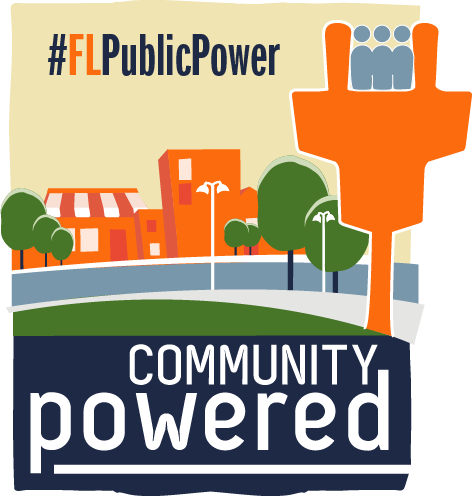Mutual Aid Exercise Utilizes Scenario Based on 1960 Hurricane
With support from the Department of Energy through a cooperative agreement, the American Public Power Association in late October held the 2019 Public Power Mutual Aid Exercise in Syracuse, N.Y. The exercise involved a scenario based largely on Hurricane Donna, which slammed into the East Coast in 1960.
The event was a functional tabletop exercise that included a category 5 hurricane impacting the U.S. Virgin Islands, Puerto Rico, and the South East and North East Regions of the U.S.
The exercise tested the capabilities of the public power mutual aid network, inter-organization and inter-agency coordination, and the tools and technologies currently used to support mutual aid coordination.
There were a total of 50 participants from 32 different public power utilities and joint action/state associations, federal government partners as well as industry partners from the Edison Electric Institute.
Among the public power officials who participated in the exercise were Amy Zubaly, Executive Director of the Florida Municipal Electric Association, J.T. Flick, Director of Crisis Management at the New York Power Authority, Lisa Hayes, Emergency Preparedness Coordinator at the Los Angeles Department of Water and Power, and Jon Beasley, Vice President for Safety and Training at Electric Cities of Georgia.
Beasley, Hayes, Zubaly and Flick recently responded via email to a set of questions from the American Public Power Association related to the exercise.
Key takeaways
Flick, Hayes, Beasley and Zubaly were asked to detail what they thought were the key takeaways in terms of lessons learned from the exercise.
Hayes said that it is important for utilities to contemplate the potential for deploying mutual assistance upon advance notification of weather events and understand that deployments or backfilling to assist multiple utilities may be necessary.
She also noted the need for ensuring that the information input into the Mutual Aid Working Group Google Docs is accurate and fresh.
Zubaly noted that hurricanes are unpredictable and projected hurricane tracks and intensity at landfall “are just that – projected. A slight wobble in the track or intensity can have significant impacts on the amount of damage a utility receives, therefore impacting the amount of mutual aid resources needed,” she said in an email. It is important to have resources pre-arranged in advance of a storm, but it’s just as important to be flexible and understand that situations can change and resources may need to be shifted around, Zubaly noted.
Flick said that one of the key takeaways was to look at continuity of operations and communications for agency, regional and national coordinators.
With the participation of EEI and the Department of Energy “there was a great understanding of the activities taking place with those partners and what the bigger picture looks like and how APPA and its members fit.”
Beasley listed three areas:
- Communications: The ability to communicate is routinely an issue in major disasters, so prepare for the worst. Confirm you have this covered from two-way radios to government emergency telecommunications service/wireless priority service to satellite phones;
- System Assessments: Beasley said this is probably one of the most over looked areas and yet the most important. “The quicker you have assessed your system and determined whether you need outside assistance is crucial,” he said. “If you’re two to three days into a mutual aid event and then you realize you are in need of outside help, most likely crews will be two to three days away.” There should be a specific plan, reviewed annually, for who and what segment of the system a storm assessor will be assigned to and this should be planned on a blue-sky day before a disaster hits. Early system assessments are critical. Beasley noted that ECG offers a “Storm Assessor Certification” workshop with classroom instruction, test and hands-on field activities;
- Documentation: Federal Emergency Management Agency requirements should be known and prepared for before a disaster hits and up-to-date maps with wire size included should be on hand. As soon as possible ride main feeders/circuits documenting damage. Videoing damage is another good way to capture this information, he said. Also, have crews and an equipment list with full information including all mutual aid agreements and/or service contracts.
Benefits for public power utilities participating in exercises
The public power officials were also asked to describe the major benefits for the public power community in terms of participating in these types of exercises.
Beasley said that he has been “fortunate to work with some of these coordinators for over 25 years. It is all about relationships.” The exercises “aid in fostering better relations with not only your region but all the regions.”
Zubaly said that participating in exercises “like this are highly beneficial, both for the network coordinators and for the public power utilities we represent. It helps build personal relationships across the network coordinators so that when situations, like hurricanes, arise and we need to call on each other for help, we’re more than just a name in another state or another part of the country.”
The exercises “also give us the ability to understand real-life mutual aid situations that have occurred from other events and to share those experiences, best practices and lessons learned. Every hurricane is different and brings about its own set of unique challenges. It’s important to be able to share these challenges with each other so that we can constantly improve the way we respond to future events,” she noted.
Hayes said that the exercises provide participants with the ability to become familiar with other network or utility coordinators and understand implications of specific impacts to their utility and resources needed for the restoration effort.
She also noted that the exercises provide the Association’s network coordinators with practice on coordinating the overall mutual assistance effort.
Roles
The public power officials described their respective roles during the recent exercise.
Zubaly noted that her role during the exercise was that of her actual role during any mutual aid event -- to serve as the mutual aid network coordinator for the public power utilities in Florida.
As a mutual aid network coordinator, “my member utilities in Florida let me know when they have a mutual aid need and what that request for resources is (how many linecrews/personnel, or other resources or equipment they need). In the event of a hurricane of the magnitude that was simulated in this exercise, lineworkers must be pulled in from outside of Florida, and well beyond the southeast, and that the request for resources is communicated and arranged through the APPA mutual aid network.”
NYPA is a participating member of the Association’s National Mutual Aid Program, Flick noted. “I am a network coordinator for Region II along with Bill Acee from NYAPP and Tony Modafferi from MEUA. We would coordinate resources offered by the APPA Region II members. I also was a member of the exercise planning team.” Modafferi is also general manager of the New York Municipal Power Agency.
Beasley had national and local roles. At the national level, he is one of the Association’s Region 4 Mutual Aid network coordinators and locally, “my director and I are responsible for the statewide mutual aid coordination in Georgia. Therefore, I am looking at the event from two different perspectives. First determining if the Georgia cities are in need of assistance and/or if they are clear, can they provide assistance to other utilities.”
Hayes said that LADWP power system executive and emergency management staff participated as representatives of LADWP mutual assistance providers and West Coast mutual assistance response whose task it was to determine availability of crew resources for the mutual assistance effort to multiple locations impacted by major hurricane activity.
(The exercise was funded by the DOE under award number DE-OE0000757).
Association encourages members to sign onto the national mutual aid agreement
The Association encourages all public power utilities to sign for a copy of the mutual aid agreement and return a copy to association staff. APPA retains copies of all agreements signed to date and assists utilities by forwarding copies when requested by FEMA.
Additional details on how to download the agreement are available here.
Article reposted with permission from Public Power Daily.
 Enter your email address in the
Enter your email address in the 
 By
By